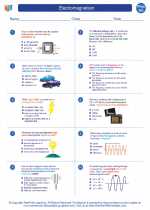Structure and Components
The integumentary system is composed of several key components:- Skin: The skin is the largest organ of the body and consists of three main layers: the epidermis, dermis, and hypodermis (subcutaneous tissue).
- Hair: Hair follicles are found within the skin and serve various functions, including insulation and protection.
- Nails: Nails are composed of keratin and form a protective covering for the tips of the fingers and toes.
- Exocrine Glands: These glands, including sweat glands and sebaceous glands, produce and secrete substances onto the skin's surface.
Functions
The integumentary system performs several vital functions:- Protection: The skin acts as a barrier, protecting the body from physical injury, pathogens, and UV radiation.
- Sensation: The skin contains sensory receptors that enable the perception of touch, pressure, temperature, and pain.
- Temperature Regulation: The integumentary system helps regulate body temperature through processes such as sweating and shivering.
- Excretion: Sweat glands excrete waste products, such as water, salts, and urea, from the body.
- Synthesis of Vitamin D: The skin is involved in the synthesis of vitamin D when exposed to sunlight, which is essential for calcium absorption and bone health.
Common Disorders
Several common disorders and conditions can affect the integumentary system:- Acne: A skin condition characterized by the formation of pimples and inflammation, often associated with hormonal changes.
- Eczema: A chronic skin condition that causes dry, itchy, and inflamed patches of skin.
- Psoriasis: An autoimmune condition that leads to the rapid growth of skin cells, resulting in thick, silvery scales and itchy, dry patches.
- Skin Cancer: The abnormal growth of skin cells, often caused by UV radiation exposure, leading to the formation of malignant tumors.
- Burns: Injuries to the skin caused by heat, chemicals, electricity, or radiation, resulting in tissue damage and potential scarring.
Healthy Practices
Maintaining a healthy integumentary system involves several practices:- Regularly cleansing the skin to remove dirt, oil, and dead skin cells.
- Protecting the skin from excessive sun exposure by using sunscreen and wearing protective clothing.
- Eating a balanced diet rich in vitamins, minerals, and antioxidants to support skin health.
- Engaging in regular physical activity to promote circulation and overall well-being.
- Seeking medical attention for any concerning skin changes or persistent issues.
[Integumentary System] Related Worksheets and Study Guides:
.◂Physics Worksheets and Study Guides High School. Electromagnetism
Worksheet/Answer key Electromagnetism
Electromagnetism  Worksheet/Answer key
Worksheet/Answer key Electromagnetism
Electromagnetism  Worksheet/Answer key
Worksheet/Answer key Electromagnetism
Electromagnetism 

 Worksheet/Answer key
Worksheet/Answer key
 Worksheet/Answer key
Worksheet/Answer key

The resources above cover the following skills:
PHYSICAL SCIENCE (NGSS)
Energy
Students who demonstrate understanding can:
Design, build, and refine a device that works within given constraints to convert one form of energy into another form of energy.